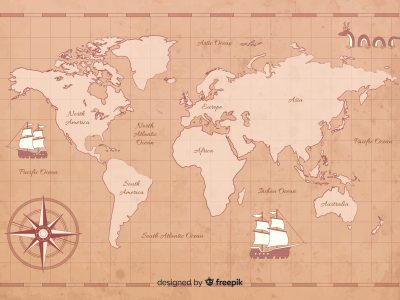In today’s increasingly interconnected world, international trade forms the backbone of many businesses’ growth strategies. However, with global expansion comes exposure to a complex web of trade policies—ranging from tariffs and trade agreements to sanctions and import-export regulations. These policies can directly impact a company’s supply chain, pricing strategies, market access, and ultimately, profitability.
To thrive in such an environment, businesses must proactively develop and refine their risk management strategies. In this blog, we explore how trade policies influence risk management in international trade and what businesses can do to mitigate these risks effectively.
Understanding Trade Policies: A Quick Primer
Trade policies are a set of rules and regulations governments use to control the import and export of goods and services. These policies can include:
- Tariffs: Taxes imposed on imported goods.
- Quotas: Limits on the number of goods that can be imported.
- Subsidies: Financial support to local producers, making domestic goods more competitive.
- Trade Agreements: Bilateral or multilateral arrangements that dictate trade terms between countries.
- Sanctions and Embargoes: Restrictions or bans on trade with specific countries, companies, or individuals.
These instruments are often used to protect domestic industries, address trade imbalances, or achieve political goals. However, they also introduce significant business risks for companies involved in cross-border trade.
How Trade Policies Introduce Risk
Trade policies affect international trade in various ways. Below are some of the main hidden risks, businesses must account for:
1. Market Access Risk
Sudden changes in trade agreements or tariffs can affect a company’s ability to enter or remain competitive in a foreign market. For example, if a free trade agreement is terminated, tariffs could be re-imposed, increasing the cost of doing business.
2. Supply Chain Disruptions
Trade policies can influence where companies source their raw materials or manufacture products. Tariffs, embargoes, or export controls can force a business to reconfigure its supply chain, which may lead to delays, increased costs, or quality issues.
3. Currency and Financial Risk
Fluctuations in exchange rates can be exacerbated by trade tensions or changes in policy, affecting pricing and profitability. Additionally, financial sanctions can restrict access to global banking systems or investment flows.
4. Compliance Risk
Operating in multiple jurisdictions with varying rules exposes companies to legal and regulatory compliance issues. Failing to comply with local trade laws can result in penalties, legal action, or reputational damage.
5. Operational Risk
Operational risks may increase when adapting business models to comply with different trade regulations. This can lead to inefficiencies, errors, and increased overhead costs.
Strategic Risk Management Responses
Now that we understand how trade policies create risk, let’s look at how businesses can adapt their risk mitigation strategies:
1. Diversification of Supply Chains
One of the most effective ways to manage trade-related risk is by diversifying supply chains. Instead of relying on a single country or supplier, businesses can develop multi-sourcing strategies to reduce dependency.
For example, a company that relies heavily on Chinese manufacturers might also establish relationships with suppliers in India, Vietnam, or Mexico. This not only mitigates geopolitical risks but also takes advantage of different trade agreements.
2. Trade Policy Monitoring and Scenario Planning
Businesses need to stay informed about current and upcoming trade policies. Regular monitoring allows companies to anticipate changes and prepare contingency plans and makes risk identification easy. Scenario planning helps identify best-case and worst-case outcomes, enabling businesses to pivot quickly.
Software solutions and trade consultants can provide up-to-date policy tracking and geopolitical risk analysis.
3. Investment in Compliance Infrastructure
Robust compliance systems are essential for navigating complex trade environments. Businesses should invest in internal teams or external consultants that specialize in international trade law. This includes understanding documentation requirements, import/export classifications, and sanctions screening.
4. Leveraging Trade Agreements and Incentives
Companies can often benefit from regional trade agreements, such as the EU Single Market, USMCA, or ASEAN Free Trade Area. Understanding the nuances of these agreements along with risk mitigation strategies allows businesses to optimize their operations and reduce costs.
For example, sourcing from countries within a free trade bloc can help avoid tariffs and expedite customs procedures.
5. Insurance and Financial Instruments
Businesses can use financial tools like trade credit insurance, hedging, and export guarantees to protect against payment default, currency fluctuations, and political instability.
Trade finance solutions offered by banks and institutions such as the Export-Import Bank can provide additional security and working capital.
Case Studies: Real-World Examples
Case Study 1: U.S.–China Trade War Impact
During the U.S.–China trade war, many U.S. companies faced increased tariffs on Chinese imports. In response, firms like Apple and HP began shifting parts of their supply chains to Vietnam and India, minimizing operational risk exposure and diversifying their production bases.
Case Study 2: Brexit and UK-Based Retailers
The United Kingdom’s departure from the European Union forced many UK-based retailers to reassess their distribution strategies. Companies invested in new warehouses within the EU to avoid customs delays and ensure compliance with EU standards.
The Role of Technology in Risk Management
Technology plays a critical role in managing trade-related technology risks. Solutions such as:
- Global Trade Management (GTM) Software help automate compliance processes.
- Supply Chain Visibility Platforms provide real-time tracking of goods and potential disruptions.
- Artificial Intelligence (AI) can predict risk scenarios by analyzing political, economic, and regulatory trends.
By incorporating these tools, companies can respond more swiftly and accurately to trade policy shifts.
Conclusion: Risk Management as a Competitive Advantage
In an era marked by trade tensions, policy shifts, and geopolitical uncertainty, companies engaged in international trade must prioritize proactive risk management from emerging risks. Trade policies are no longer background factors—they directly influence profitability, operational efficiency, and strategic decision-making.
By embracing diversification, compliance, technology, and adaptive planning, businesses not only protect themselves from downside risk but also gain a competitive edge in the global market.















